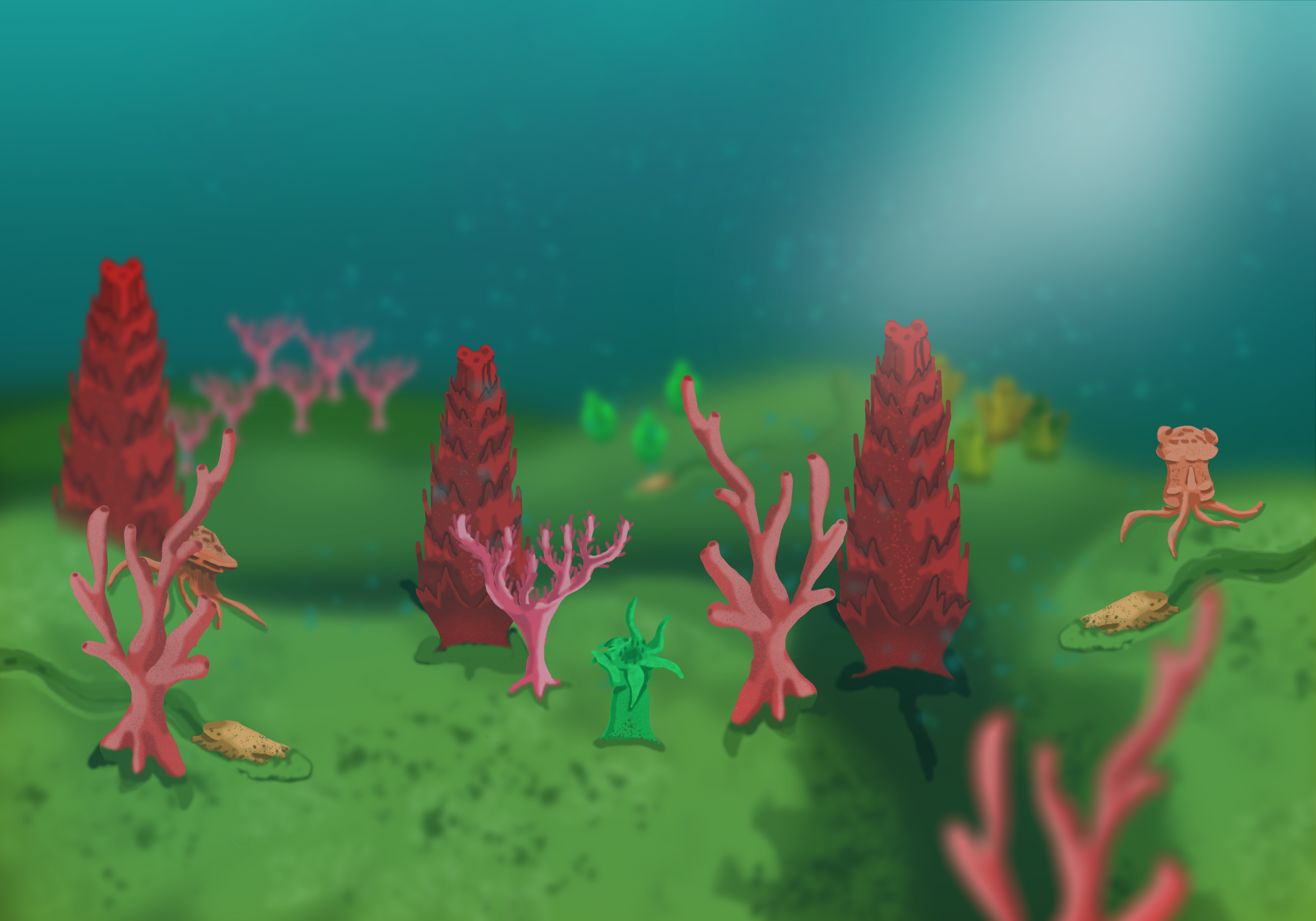HOME | DD
 Taz0Tay — Sponges In Deeper Shallows
Taz0Tay — Sponges In Deeper Shallows

#alien #planet #sea #species #sponge #water #speculativeevolution
Published: 2020-07-22 13:10:39 +0000 UTC; Views: 1490; Favourites: 28; Downloads: 0
Redirect to original
Description
Species of Sponges have evolved to better handle deeper shallows, as the appearance of algae allow for more nutrients to reach the sea floor, soon coral reefs can form and can provide more nutrients to those living organisms that live reside in the shallows.The Fern has split into two species and the one that lives in these deep shallows is the Star Corika these are now longer sponges as there exterior is softer and they have "Tentacles" which aid in water filtration, however they have been examined digesting dead matter of other sponges.
The Lump has diverse into three species and only one can be commonly found at these depths, The Thorn Sponge has a tall frame and spike lining its exterior for catching dead algae matter and other nutrients in the waters.
The Twig has split into two species both occupying deeper shallows, the first is Primitive Coral having a pinkish colour and growing larger then its ancestor, its many branches help with growth. The other is the Shaved sponge, its branches resembling a tree and little soft thorns aligning its branches to help with water filtration.
The Mush has also evolved into three species, and two which are no longer sponges that live in deeper shallows one being the Jellunge using its "roots" to absorb the bio-Matt and a softer exterior for a more efficient growth at the cost of a shorter life. The Sessile Sparadite is the other species occupying similar strategies with roots absorbing the bio matt and the softer exterior, however there difference is the species two sack like appendages either side of its pore that fill up with oxygen as it can drift in the water and settle in a new location.
The Umbrella has one species living in deeper shallows that is no longer a sponge, and one in the higher shallow. The Stroller Slunge are more common in deeper shallows but can be found in higher waters, But a remarkable discovery has been made as they can move! However slow it gives them a strong advantage against other organisms as they can get new food, they also seem to have a nervous system for detecting blockages in there paths.

























